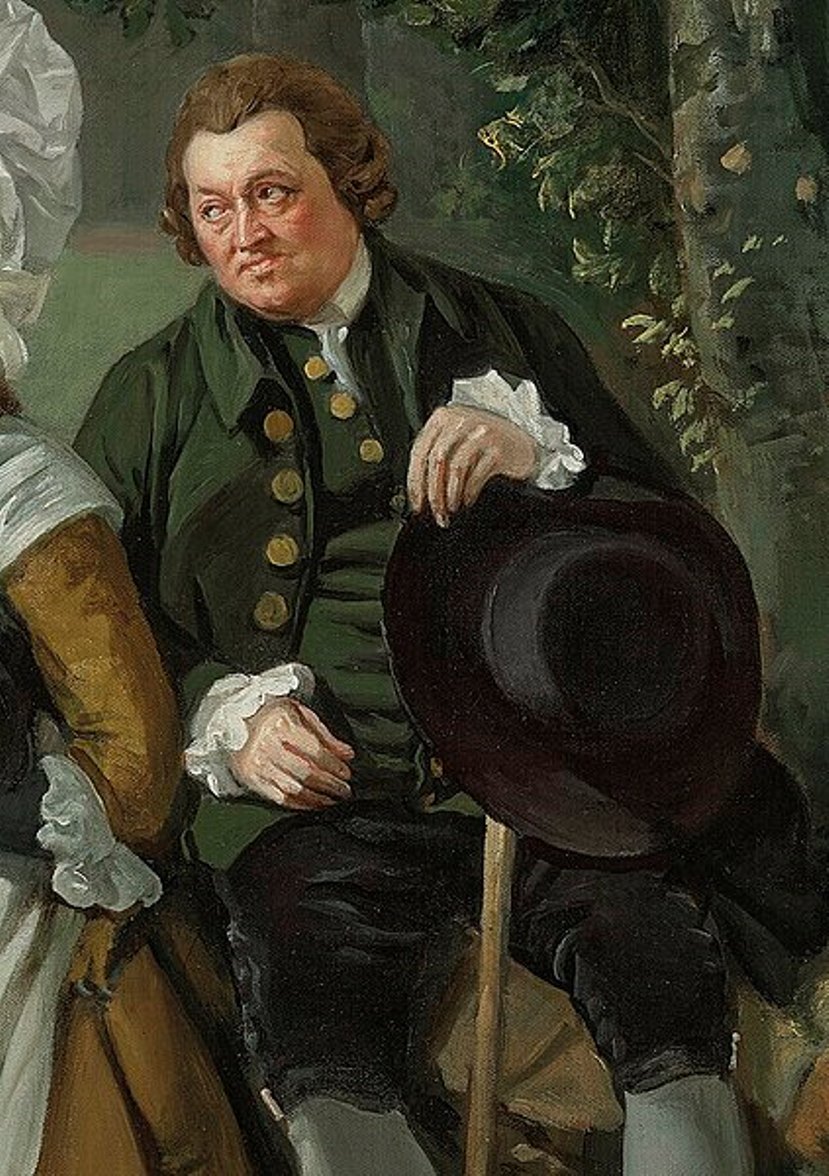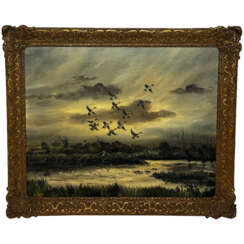art auction




Stephan Kaluza is a multifaceted artist known for his work as a photographer, painter, and author. Living and working in Düsseldorf, Kaluza has developed a unique artistic voice that explores the intersections of natural philosophy, history, and the essence of human perception through both his visual art and literary works. His education in Düsseldorf during the 1990s, encompassing studies in photography, art history, and philosophy, has deeply influenced his creative output, allowing him to craft works that resonate on multiple levels with viewers and readers alike.
Stephan Kaluza's art often delves into themes of nature and creation, with his paintings ranging from hyperrealistic depictions to nearly abstract portrayals of forests and water surfaces. Notably, his work introduces disturbances into seemingly idyllic landscapes, revealing the layers of history and human impact hidden beneath the surface beauty of nature. This duality invites viewers to question the reality of what they see and to consider the deeper narratives that landscapes can hold, especially when those landscapes have served as backdrops to historical events or personal stories.
One of his most ambitious projects, the "Das Rheinprojekt," saw Stephan Kaluza undertaking an almost eight-month journey along the Rhine River. Documenting the river's right bank in over 21,000 photographs, he created a panoramic view that challenges traditional perspectives of landscape photography. This work, along with his "Das Mauerprojekt" and other photographic series, underscores Kaluza's commitment to capturing and conveying the complex relationship between humanity and the natural world.
Stephan Kaluza's contributions to the fields of art and literature have been recognized with awards such as the George-Konell-Preis of Wiesbaden and the Price of the Carl- und Ruth Lauterbach-Stiftung Dusseldorf. His works are held in both public and private collections worldwide, including the Portland Art Museum in Oregon, USA, and the Stadtmuseum Düsseldorf, Germany, highlighting his international appeal and the broad relevance of his themes.
For collectors and experts in art and antiques, Stephan Kaluza offers a profound engagement with the world through the lens of an artist deeply informed by a rich educational background and a keen sensitivity to the natural and cultural landscapes that shape our experiences. His work invites contemplation and dialogue, making his pieces valuable additions to any collection.
Stay updated on Stephan Kaluza's latest works, exhibitions, and publications by subscribing to newsletters from galleries and museums that feature his work. This subscription ensures access to new sales, auction events, and showcases related to Kaluza's evolving portfolio, offering insights into contemporary art and literature influenced by his unique perspective.


Willem Janszoon Blaeu was a Dutch cartographer and map publisher.
Willem studied astronomy and cartography under the Danish astronomer Tycho Brahe and even discovered the variable star P Swan in 1600. A little later Blaeu settled in Amsterdam, where he began making globes and also began producing land and sea maps, including a 1605 world map. In 1629 he managed to acquire the printing plates of the cartographer Jodok Hondius, with which he published his own atlas.
In 1633, Willem Blaeu was appointed cartographer of the Dutch Republic, as well as the official cartographer of the Dutch East India Company. Blau built up a large collection of maps and conducted an extensive publishing business. After Willem's death, his sons Jan Blaeu (1596-1673) and Cornelius Blaeu successfully continued his work. But in 1672, during a fire in Amsterdam, Blaeu's workshop was destroyed, and the company founded by Willem Blaeu ceased to exist in 1698.




Jean-Baptiste Oudry was a French Rococo painter, engraver, and tapestry designer. He is particularly well known for his naturalistic pictures of animals and his hunt pieces depicting game. His son, Jacques-Charles Oudry, was also a painter.


Joseph Wenglein was a German painter who is often referred to as one of the last significant landscape painters of the 19th century Munich school.
Parallel to his law studies Joseph Wenglein studied at the Academy of Fine Arts in Munich. He then switched entirely to art and became a pupil of the landscape painter Johann Gottfried Steffan. On his recommendation, Wenglein sometime later became a pupil of the painter Adolf Heinrich Lier, whose colouristic tendencies, calculated to express profound moods, particularly appealed to him.
Josef Wenglein knew how to reproduce the change of daylight, especially in spring and autumn, with a fine sense of the slightest atmospheric fluctuations and to vary the grey pleasant tone of the Bavarian plateau in all its nuances masterfully.




Kaspar Heinrich Merz was a Swiss draftsman and copper and steel engraver. From 1821, with the help of "a few patrons", he was "apprenticed" to the copper engraver Johann Jakob Lips in Zurich for four years. He also worked as an engraver for the magazine Historical Entertainment. Merz had also acquired a reputation for his color engravings, some of which he created over years of individual work.


Ludwig van Beethoven was a German composer, pianist, and conductor, one of the most famous and celebrated composers in world history.
Beethoven showed an aptitude for music at a very early age; from the age of four his father began to teach him. Beethoven's early works - piano sonatas and symphonies - were composed under the strong influence of the music of the great classical composers Joseph Haydn and Wolfgang Amadeus Mozart. As Beethoven matured, however, he began to experiment with new forms and harmonic sequences, and his music became more complex and emotionally charged.
Unfortunately, at the height of his talent, Beethoven began to gradually lose his hearing, to the point of complete deafness by the end of his life. Despite this, he continued to compose and conduct, using special devices to feel the vibrations of the music.
Beethoven's work is considered pivotal in classical music and is a bridge between the classical and Romantic eras. His works vividly express a wide range of emotions, from triumph and joy to sadness and despair. Beethoven was also one of the first composers to include soloists and chorus in his symphonies. Beethoven's best-known works include nine symphonies, 32 piano sonatas, 16 string quartets and the heroic opera Fidelio. These and many other works have cemented Beethoven's place in music history as one of the greatest composers of all time. His music continues to be played and studied by musicians and music lovers around the world.




Pierre-Joseph Redouté was a French artist and botanist of Belgian origin, a royal painter and lithographer.
Redouté traveled extensively from his youth and carefully studied the pictorial art of various masters, but his main interest eventually became botanical illustration. He gained access to the Botanical Gardens in Paris and the botanical library. Over time, the talented Redouté became a very popular and successful painter of flowers and plants, publishing more and more albums.
In the 1790s, Redouté was internationally recognized as one of the most popular floral artists in the world. His depictions of plants are still as fresh as if they had just been painted. His album of watercolor illustrations, The Lilies, is one of the most expensive printed books in history.


Publius Vergilius Maro, usually called Virgil or Vergil, was an ancient Roman poet of the Augustan period. He composed three of the most famous poems in Latin literature: the Eclogues (or Bucolics), the Georgics, and the epic Aeneid. A number of minor poems, collected in the Appendix Vergiliana, were attributed to him in ancient times, but modern scholars consider his authorship of these poems as dubious.
Virgil's work has had wide and deep influence on Western literature, most notably Dante's Divine Comedy, in which Virgil appears as the author's guide through Hell and Purgatory.
Virgil has been traditionally ranked as one of Rome's greatest poets. His Aeneid is also considered a national epic of ancient Rome, a title held since composition.









![[FOSTER, George (fl. 1735-1740)] – Robert SAYER (1735-1794).](/assets/image/picture_4361590/74b5a/13dca103bbf8f022f3e8439e6036e3811733871600jpg__fix_374_244.jpeg)
![[FOSTER, George (fl. 1735-1740)] – Robert SAYER (1735-1794).](https://veryimportantlot.com/assets/image/picture_4361590/74b5a/13dca103bbf8f022f3e8439e6036e3811733871600jpg__fix_374_244.jpeg)

























































